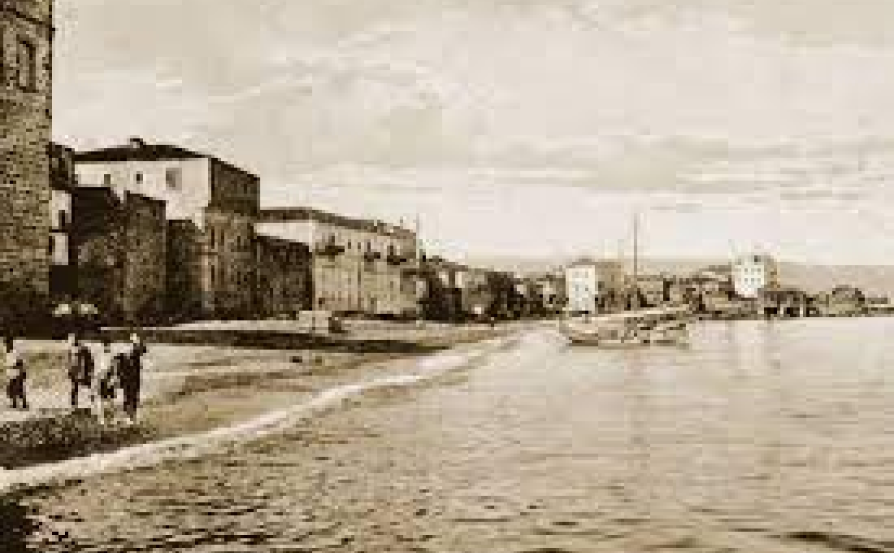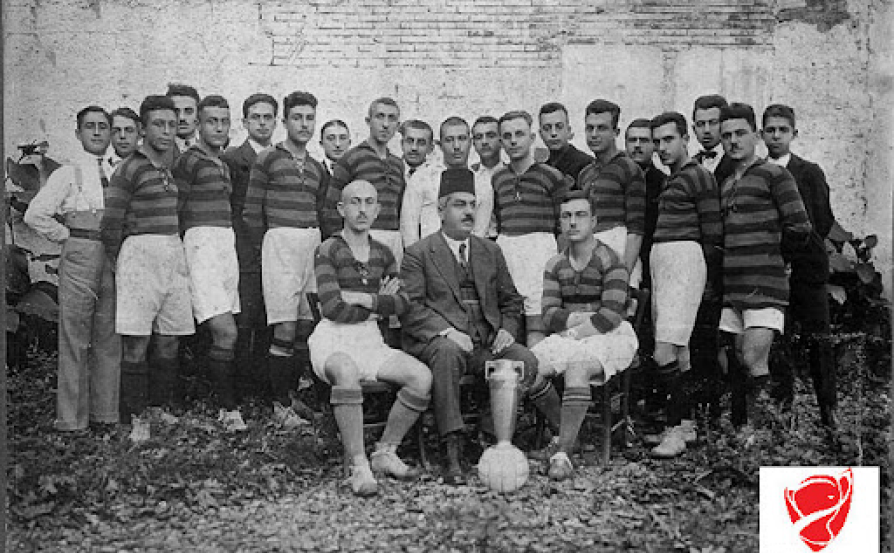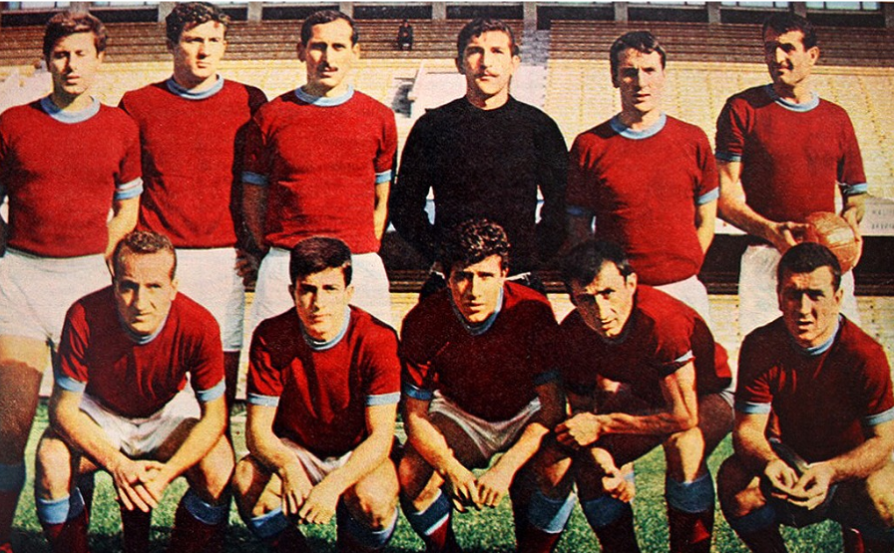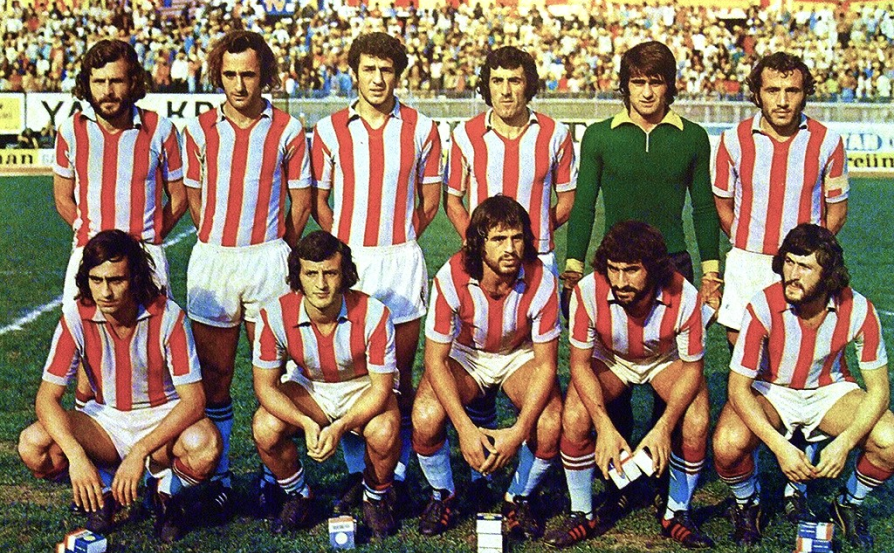
Trabzon, one of the most important ports of the Ottoman Empire in the Black Sea, was not only a significant commercial hub but also an important socio-cultural crossroad. Any ‘innovation’ coming from the West would first take root in Trabzon, and then spread to the surrounding regions. Football was one of them. ‘Asosyeşın Futbol’, one of the first three football books published during the Ottoman period, was written in Trabzon by Süleyman Rıza Kuğu, a member of İdmanocağı and was published in 1922. In the preface, the purpose of the book's publication was explained as "to teach football to the Eastern provinces." Trabzon was in a position of teaching, sharing, and leading, and its claim to this role was historically rooted in this context. From this perspective, no one should have been surprised that Trabzonspor was the first club to bring the championship to Anatolia in 1976!
Trabzon was the fourth member of the Turkey Sports Societies Alliance, the first sports organization in Turkey, after İstanbul, Izmir, and Ankara. League matches have been organized in the city as part of a fixture schedule since 1921. In July 1923, the young members of Trabzon İdmanocağı organized a trip to Istanbul to improve their football skills, and there they watched matches between Turkish teams and foreign teams that were visiting Istanbul at the time. The young people in Trabzon never settled for their own football and knowledge; they were constantly in search of ways to increase their sporting experiences. Trabzon was a city that constantly pushed its boundaries. Only in 1925, the first international contact was made when a sports delegation from the Soviet Union was invited to the city. This was also a first. In the coming years, teams from İstanbul, İzmir, Ankara, even Iran and Austria would be invited to the city on every available occasion; since the first day Trabzon locals met the leather ball, they would assign football a meaning beyond the "local" level.
In the early Republican period, a vibrant sports climate had begun to dominate in Trabzon. Hüseyin Avni Aker, one of Trabzon's unforgettable sports leaders, wrote the following lines in the İstikbal newspaper during the early years of the Republic: "Trabzon city is undergoing a sports obsession. In Istanbul, there is a craze for dance, in Ankara for the oud, and in Trabzon for football... These are like diseases that don't let go of those they catch. In the neighborhoods of Trabzon, all the way to Kavak Meydanı, wherever there is a square, mosque yard, or garden, a few children gather! – They are shouting 'Goal, goal!' Especially this week, the gathering of many idle people from the holiday break towards Kavak Meydanı has intensified this obsession. Now, everyone has a sports excitement."

There were many clubs which passed through the Trabzon Amateur League including İdmanocağı, İdmangücü, Necmiati, Birlikspor, Karadenizgücü, Doğanspor, Yolspor, Martıspor, Erdoğdu Gençlik and Trabzon Lisesi. These clubs also functioned as "social" associations, enriching the city's cultural life with various events they organized, such as theater plays, performances, balls, and music concerts. By the 1950s, the football 'obsession' was so intense in the city that the number of clubs in the local league exceeded 20 at one point, leading to the reorganization of matches into two groups. İdmanocağı and İdmangücü were the two clubs that competed for supremacy in Trabzon football. The fierce rivalry between these two clubs would leave a mark on the city's football history.
The Ocak-Güç derby would create a carnival-like atmosphere in the city. The streets, adorned with colorful flags and banners, would be filled with thousands of football fans eagerly waiting for the match to begin, while the intensity of the rivalry was heightened by the bets and wagers placed on the game. The rival fans would parade a coffin or a donkey painted in the opposing team's colors through the city's squares and alleyways. When match time arrived, football fans, who had taken their seats at the Şehir Stadium, would cheer with chants like "şa-şa-şa" — which hardly went beyond that phrase — but their enthusiasm and unending excitement would continue as they supported their teams.
There were people comparing the rivalry between the yellow-red Ocaklılar and green-white Güçlüler to that of Galatasaray-Fenerbahçe in sports and the CHP-DP struggle in politics. At the end, city football benefitted from this intense rivalry, which was shaped by various individual and social motivations. In a city where football passion and culture thrived, top-level football players were also nurtured. Some of these young people, who were caught up in the passion for football in their home in Trabzon, left their city for higher education, but continued their football careers in the cities they moved to. Some of the first names that come to mind as "football ambassadors of Trabzon" include Hasan Polat, the legendary figure of Gençlerbirliği who later served as the president of the Turkish Football Federation, his brother Ali Polat, Salim Satıroğlu and Ahmet Karlıklı, unforgettable stars of Galatasaray, Taka Naci and Zekeriya Bali from Fenerbahçe, Beykoz's famous goalkeeper Sıtkı Taşer, and the national footballer Nazmi Bilge, who was also the captain of Beşiktaş.

İdmanocağı, in addition to its local league championships, had turned to be a widely recognized club by winning the Turkish Amateur Championship three times. After İdmanocağı and Ankara Havagücü finished the 1958 Turkish Amateur Championship with the same points and goal difference, the trophy was split in two, and the Ocaklılar took home half of the cup to their trophy cabinet. The history of İdmanocağı was filled with countless successes and fascinating stories. Their well-deserved national reputation was further strengthened in 1965 when they eliminated Beşiktaş from the Turkish Cup by defeating them 1-0 at Mithatpaşa. With a history full of successes, a strong identity, and nearly half a century of institutional experience, this club would resist in its mission to represent Trabzon in the professional leagues, taking on the task under its own name and colors...
As is known, the professional second and third leagues were established under the leadership of the President of the Football Federation, Orhan Şeref Apak in the first half of the 1960s. The whole country envisioned that professional city teams would be established across the country to compete in these leagues. It was necessary for the amateur clubs to merge in order for all the financial, moral, and sporting resources of the city to be mobilized for a professional sports club. Of course, Trabzon could not remain outside of this mobilization. Yet, the rivalry between İdmanocağı and İdmangücü was so dominant in Trabzon football that bringing these two clubs under one roof was almost impossible. Indeed, it became clear during the initial efforts of a handful of idealists attempting such an endeavor that this process would be quite problematic. The members of İdmanocağı were not willing to join the merger as they did not want to abandon their own identity and colors. On June 21, 1966, İdmanocağı, which had merged with Martıspor and Yıldızspor, was admitted to the professional leagues under its own name and colors, initially joining the Turkey 2nd League. However, due to issues with official correspondence and notifications, İdmanocağı was not allowed to play in the Second League. On July 20, 1966, İdmangücü, Karadenizgücü, Martıspor, and Yolspor joined forces to establish Trabzonspor under the red and white colors. The club began competing in the Second League during the 1966-67 season.
It was believed that Trabzonspor, without the inclusion of İdmanocağı, would present an incomplete image in terms of city representation. A court case filed by İdmanocağı against Trabzonspor in the Council of State resulted in a decision to suspend the execution. By the end of the season, discussions about the merger were reignited. Despite the intervention of many high-ranking officials, including Federation President Orhan Şeref Apak, State Minister Kamil Ocak, Hasan Polat, and Cumhuriyet Newspaper's Sports Director Erdoğan Arıpınar, the outcome remained largely unchanged. The command that ended the tense summer of 1967 in Trabzon came from Ulvi Yenal, the Director General of Physical Education at the time. Yenal stated that if İdmanocağı and İdmangücü did not merge, neither club would be admitted to the Turkish Second League, and that Trabzon, which prided itself on its history, would not be represented in the professional leagues. This caused a shock in Trabzon. Meetings were held every day, every evening. Sometimes a ground for agreement would emerge, but even the smallest detail would ruin everything. Meanwhile, the deadline set by the Football Federation for provincial clubs was getting close... The entire city deeply desired the establishment of a club under the name Trabzonspor. So much so that, at the end of July 1967, the people of Trabzon would organize a silent march to protest the club presidents who had failed to reach an agreement… Finally, on August 2, 1967, after countless meetings day and night, a positive outcome was reached, and both clubs agreed to merge. Trabzonspor Club was formed under the claret and blue colors with the merger of İdmanocağı, İdmangücü, Karadenizgücü, and Martıspor. With the start of the 1967-68 season, Trabzonspor said "hello" to the Second League.

After Trabzonspor was established through long efforts, it began its battle in the Second League with the goal of reaching the First League from the very first season. The place that "Trabzon football" truly deserved was certainly not seen as the Second League; the people of Trabzon’s expectations from the Claret-Blue club were fueled by the strength drawn from a celebrated history. How come a city which had "led the country's sports for years" could remain in the Second League? When Trabzonspor lost 1-0 to PTT in the final match of the 1971-72 season and missed out on promotion to the First League, the club was devastated. This setback led to a dramatic shift in football policy, and a new transfer approach, known as "returning to the roots," was adopted. By returning to the club's own resources and bringing in Trabzon-born players, the foundation of the legendary team was established. As the Claret-Blues finished the 1973-74 season as champions, their adventure in the First League began in the following season.
Trabzonspor won the Peace Cup, which was organized by the Hayatspor magazine in Cyprus, in its first year in the First League. This was the beginning of the ten years filled with many cups. Trabzonspor became the champion of the 1975-76 season, taking it outside of İstanbul for the first time. This not only shook the established order of Turkish football but also marked the beginning of a revolution. The team also managed to win the Presidential and Prime Minister's Cup titles in the same year. Trabzonspor, which the sports press began referring to as the "Cup King," had gained great respect and prestige in the public eye. On the other hand, some still considered this success as 'coincidental.' In the end, a paradigm that was once considered unshakable in Turkish football had been fundamentally shaken. However, the people of Trabzon had full confidence in themselves. They knew well that the reality of "Trabzonspor" was built on solid foundations. The unforgettable coach of the Claret-Blues, Ahmet Suat Özyazıcı, pointed to the city's deep-rooted football heritage and remarked, "This is not a 'revolution,' but rather an 'evolution.'" Trabzonspor was coming on strong...

The Black Sea Storm managed to win a total of 6 league championships, 6 Presidential Cups, 3 Turkish Cups, and 3 Prime Minister's Cups, bringing them all to its trophy cabinet between 1975 and 1985. Starting from the mid-1980s, developments both within the club and in Turkish football may have kept the club from winning another championship until the 2010-11 season; however, Trabzonspor never gave up on aiming for the top. Trabzonspor managed to increase the number of Turkish Cup titles in its trophy cabinet to 8, the Presidential Cup to 7, and the Prime Minister's Cup to 5. Trabzonspor had the honor of winning the TFF Super Cup in the 2009-2010 season for the first time in its history. Beginning its European adventure with a victory over Akranes on September 15, 1976, the club continued to succeed unforgettable victories against teams like Liverpool, Aston Villa, Inter, Barcelona, and Olympique Lyon.
In the club’s 50th year of establishment, Trabzonspor bid farewell to the Hüseyin Avni Aker Stadium, which had hosted numerous victories and become the football sanctuary of the city, and began playing its matches at the new stadium in Akyazı. As a result of the momentum gained at its new stadium, Trabzonspor succeeded in bringing the Turkish Cup and Super Cup to its trophy cabinet in the 2019-2020 season, after a long break.
The Black Sea Storm added the 2021-2022 season championship and the Super Cup to its list of achievements, opening a new chapter in its history.
Trabzonspor, throughout its glorious 55-year history, has been a team of both dramatic losses and shocking successes, as well as unforgettable victories. However, it represented much more than just a sports club in every era and under all circumstances. With its kemenche, tulum, horon, and kolbastı, as well as its anchovies, dialect, and the fierce nature of the Black Sea, Trabzonspor became the carrier of many folkloric and cultural symbols of the region, serving as the platform where these symbols were showcased on a national level. This was undoubtedly one of the most defining characteristics that set it apart from other clubs. And another one was that it always represented hope, determination, faith, struggle, and passion.